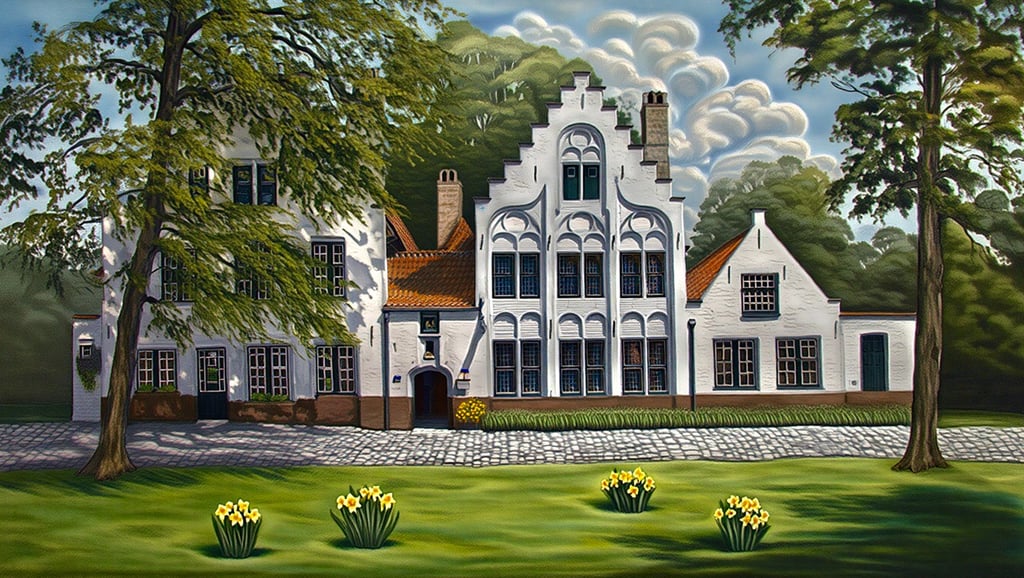Flemish Béguinages: Silent Cities with a Whiff of Rebellion
Explore the Flemish Béguinages in Belgium, UNESCO-listed sanctuaries of history and tranquillity. Discover their unique architecture, women-led history, and serene courtyards across Bruges, Ghent, Leuven and beyond.
ECHOES OF ELSEWHEREEUROPEBELGIUMUNESCOARCHITECTUREHISTORYVILLAGES & TOWNSCULTURE


Flanders, Belgium
If you imagine medieval Europe as a man’s world of castles, crusades and questionable hygiene, the Flemish Béguinages will politely correct you. These clusters of whitewashed houses, chapels and quiet courtyards across Flanders in Belgium are the architectural remains of a social movement that was equal parts piety, independence and subtle defiance. Recognised by UNESCO, the Béguinages are not just pretty little cloisters but the physical echoes of women who chose a life outside the traditional boxes of “nun” or “wife.” In other words, they were centuries ahead of the curve.
A Different Kind of Holy Neighbourhood
The Béguinages were founded from the 13th century onwards, when groups of women, known as Béguines, decided to live in semi-monastic communities. They took no permanent vows, could own property and had the gall to exist without being under the thumb of men or church hierarchies. The result was a unique mix of religious devotion and economic independence, all wrapped up in picturesque architecture. Each Béguinage feels like a town within a town, complete with cobbled streets, hidden gardens and the faint echo of footsteps long gone.
Some look like intimate hamlets, others like sprawling mini-cities, but all radiate a sense of tranquillity that feels suspiciously like freedom. Today they stand as much as cultural landmarks as they do havens of calm, with their neat white facades and leafy courtyards looking tailor-made for daydreaming.
Getting There Without Losing Your Bearings
The Béguinages are scattered across Flanders, with the finest examples in cities such as Bruges, Ghent, Leuven, Mechelen and Kortrijk. Each is usually tucked just a short stroll from bustling city centres, though stepping through their gateways feels like crossing into another century. Train travel between these cities is efficient and frequent, making it entirely feasible to craft a Béguinage-hopping itinerary without breaking a sweat.
Where to Stay: Between Bells and Beer
Accommodation is easily found in the host cities themselves. Bruges will charm you with canal-side boutique hotels, Ghent offers edgy student-town energy, and Leuven mixes academic gravitas with surprisingly lively beer halls. Staying within walking distance of a Béguinage allows you to experience the juxtaposition: vibrant modern Belgium on one side of the wall, monastic serenity on the other.
Things to Do (Besides Whispering in Awe)
Stroll with a Purpose: Wander the cobbled streets and admire the rows of whitewashed houses, each once home to women who defied neat categories.
Find the Chapel: Almost every Béguinage has its chapel, still glowing with quiet spirituality and the faint perfume of candle wax.
Botanical Breathing: Courtyards are often lush with trees and gardens. Perfect spots to sit and feel smug about avoiding the city crowds.
Cultural Detours: Many Béguinages now house museums or art exhibitions, adding an extra layer of intellectual nourishment to your visit.
People-Watching with Imagination: While residents today are not Béguines, you cannot help but wonder what their medieval predecessors would think of you turning their chosen life into a photo opportunity.
Why the Béguinages Still Matter
At first glance, they are postcard-perfect backdrops for Instagram. Look closer, and they are monuments to women carving out a space for themselves in a world that offered them little autonomy. They remind us that history is not always about kings and battles but also about communities quietly shifting cultural norms one cobbled courtyard at a time.
Final Thought
The Flemish Béguinages are the rare kind of heritage site that is both beautiful and subversive. They are at once serene sanctuaries and subtle symbols of defiance, where the architecture whispers of freedom as much as faith. Visit not only to marvel at their aesthetic charm but also to tip your hat to the women who built a life on their own terms centuries before hashtags and equality slogans.




